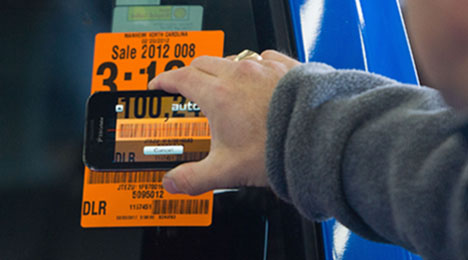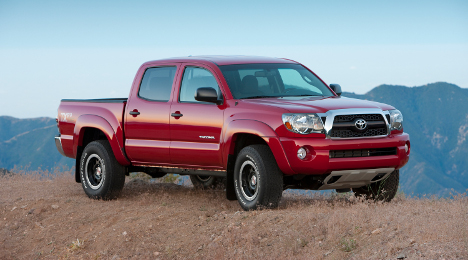As overall auction price softening continued last week, one segment bucked the trend: full-size vans.
Black Book’s Ricky Beggs pointed the trend out in his latest “Beggs on the Used Car Market” video report, noting this “might be a good time to be a seller of used full-size vans and wagons.”
Over the past nine weeks, the full-size passenger vans have increased in value, and the cargo vans have see prices rise for eight of the past nine weeks.
With only 40 percent of the overall price adjustments last week being increases, full-size wagon prices rose by $135 last week, while the vans saw an increase of $41.
“The full-size van segment has been progressing with major model change offerings since the introduction of the Mercedes and Dodge Sprinter models which hit the US soil back in model year 2003. In 2013 Nissan joined the new look offerings with the NV and in 2014 the Ram Promaster brought front wheel drive to the mix,” said Beggs, editorial director at Black Book. “After over 35 years of segment leading Econoline van sales, Ford has switched to the 2015 Transit to compete in this functional changing segment.”
Overall, the trucks saw a slight rise of $6 last week, with eight of the fourteen truck segments seeing increases.
Last year during the same week, truck prices fell by an average of $36.
The car market was more in line with predicted price softening, with an overall segment price drop of $60.
To view the latest "Beggs on the Used Car Market" video report, see above.
April saw strength both in the lanes and on the lots, as used-vehicle sales rose by 4 percent, and the last of the tax-season buying spree provided a boost in the lanes, as well. Manheim chief economist Tom Webb contends recent retail market strength is serving to keep auction prices elevated.
And early indications are that overall used-vehicle sales remained strong in May, According to Manheim’s May Auto Industry Brief.
Dealers dealt with high wholesale prices in April, as Webb shared that wholesale prices (on a mix-,mileage- and seasonally adjusted basis) rose for the fourth consecutive month in April.
This resulted in a Manheim Used Vehicle Value Index reading of 124.9 for the month, which represented a 4.8-percent increase from a year ago, according to the report released Thursday.
So, where is the predicted price drop due to expanding used supply?
“Most market participants had been expecting to see some easing in used-vehicle values due to rising wholesale supplies by this point in the year. As an explanation of why it hasn’t happened, we can only beat the same old drum — the strength of the retail market is preventing any meaningful decline in prices,” Webb explained.
“The competitive nature of the wholesale market means that dealers keep on bidding until their expected grosses become insufficient to cover the risk. Today, gross margins have stabilized and net profits have soared as a result of higher throughput and increased operating efficiencies,” he continued.
Prices for all major market classes now have year-over-year price gains, Webb pointed out.
Luxury car prices remained relatively stable, however, and Webb pointed out this segment has a particularly strong performance in April.
“Although wholesale pricing in the luxury segment has suffered for more than a year, luxury vehicles outperformed the overall market in April. Most of that was due to easy year-over-year comps,” Webb said.
And for dealers searching for what Webb coins the “sweet spot” in the wholesale market — they might have to shell out a bit more.
“An analysis of average mileage by price tiers indicates the sweet spot in the wholesale market has moved up in price,” Webb said. “In April, the strongest pricing (and lowest relative supply) was in the $12,000 to $14,000 price range. In 2013 and early 2014, the strongest pricing was often found in the $8,000 to $10,000 price range.”
Dealers looking for off-rental vehicles in the lanes paid a bit more out of pocket, as well, this past month than they did last year.
Unadjusted for mileage and mix shifts, auction prices for rental risk units continued to rise in April, Webb reported, with rates rising by 7 percent year-over-year.
That said, after adjusting for mileage and mix, prices for off-rental units were down relative to March.
Interestingly, though prices are up year-over-year, mileage is much higher on average for off-rental units than seen in 2013.
Webb pointed out that average mileage for off-rental units in the lanes fell below 40,000 for the first time this year, though this number was still 9 percent higher than a year ago.
And though rumors of an influx of off-rental units to auction later this year are circulating, volumes at auction “remained on the low side,” in April, Webb said.
“Industry sources indicate new units sold into rental fleets declined 7 percent in the first four months of 2014 compared to a year ago,” Webb said, noting rental fleet sales are down, as well. “The bulk of that decline was accounted for by domestic manufacturers.”
Late last week, NADA Used Car Guide was anticipating that auction prices would continue to correct from tax-season highs.
According to NADA Used Car Guide AuctionNet data, wholesale prices were expected to fall by 0.3 percent, or $50, last week.
There are only two segments that were expected to see prices increase during the week: the large SUVs, with a gain of 1.1 percent; and the luxury utilities, with an increase of 0.3 percent.
NADA UCG was expecting the heaviest losses for the week to be in the compact car segment, with an average drop of 1.3 percent, followed by midsize cars (down 1 percent).
“Smaller declines are expected in all other segments as prices are expected to slip by 0.3 percent to 0.9 percent,” said David Paris, automotive analyst at NADA UCG.
Prices were falling two weeks ago in the lanes, as well.
According to Black Book data, the car segments saw an average decline of $58 two weeks ago, while the trucks fell by an average of $5.
Black Book editorial director Ricky Beggs said, “Over the past couple of weeks we have noticed a softening of the market with values and sales conversions. But don’t be alarmed with this trend, as we see it as part of the normal expected depreciation.
“The resulting numbers this past week are very similar to year ago levels,” he added.
Four- and two-week AuctionNet wholesale average prices are created by collecting all AuctionNet records for vehicles up to five years of age for a specified period of time. Prices are then adjusted for changes in mileage and mix.
Current week prices are based on NADA's proprietary used-vehicle value model which includes assumptions for new-vehicle prices, used-vehicle supply, gasoline prices, and other economic factors.

| NADA Segment |
Average AuctionNet® Wholesale Price |
2-Week v. Current |
| |
4-Week Average |
2-Week Average |
Current Week |
% Change |
$ Change |
| Compact Car |
$11,675 |
$11,600 |
$11,450 |
-1.3% |
($150) |
| Compact Utility |
$15,675 |
$15,550 |
$15,500 |
-0.3% |
($50) |
| Industry |
$16,625 |
$16,500 |
$16,450 |
-0.3% |
($50) |
| Large Pickup |
$23,325 |
$23,175 |
$22,975 |
-0.9% |
($200) |
| Large SUV |
$29,775 |
$29,575 |
$29,900 |
1.1% |
$325 |
| Luxury Car |
$22,125 |
$22,025 |
$22,000 |
-0.1% |
($25) |
| Luxury Utility |
$26,550 |
$26,425 |
$26,500 |
0.3% |
$75 |
| Mid-Size Car |
$13,175 |
$13,125 |
$13,000 |
-1.0% |
($125) |
| Mid-Size Utility |
$20,250 |
$20,200 |
$20,100 |
-0.5% |
($100) |
| Mid-Size Van |
$16,400 |
$16,325 |
$16,250 |
-0.5% |
($75) |
Kelley Blue Book announced this morning that it is launching range-based pricing for used-car values. This follows the range-based pricing for new-car values that KBB introduced in October.
“As a result of in-depth consumer and dealer research, Kelley Blue Book’s new range-based used-car pricing is expected to alleviate some of the friction from the shopping process by setting common expectations on pricing and valuation terminology for both buyers and sellers,” said Jared Rowe, president of Kelley Blue Book.
“This evolution in our valuations display continues to offer fresh, local and market-reflective pricing from the most trusted brand in the industry, with 88 years of automotive expertise, in an all-new format,” he continued. “The new range-based pricing is centered on Used Car Fair Purchase Price, which reflects the price consumers typically are paying a dealer for a used vehicle this week.”
The upgraded experience on KBB.com comes with “an updated look and feel with the Price Advisor tool,” as well, the company said, noting that the new website display gives shoppers market-based information on KBB’s estimate of what they can expect to pay for a used ride from a private party or a dealer.
The consumer also receives a KBB estimate on what the seller can expect to get from the dealer on a that vehicle as a trade-in.
Citing its own research from 2013, KBB indicated that after shoppers took an initial look at Price Advisor, 95 percent of used-car owners surveyed said the information was valuable. Moreover, 92 percent said they would use Price Advisor in negotiating a fair price.
“In fact, 89 percent of those surveyed who engaged with the tool expect to pay within the featured Used Car Fair Purchase Price range,” KBB pointed out.
The company went on to note how Price Advisor gives buyers a “graphical representation” of what KBB believes their price expectation should be when buying a used car from a dealer or private individual.
“In addition, if shoppers are considering a used car that is similarly priced to a new model which could be purchased for only a few dollars more each month, an ‘upgrade’ offer appears on the site alerting consumers of this information,” KBB explained. “The ‘upgrade’ offer takes into account the average interest rate of a new vehicle versus a used model and average monthly payment terms. In some cases, the new model makes more financial sense for a shopper’s wallet.”
Rowe added: “The goal of the ‘upgrade’ offer is to provide all relevant vehicle information to car buyers based on Kelley Blue Book’s market knowledge. Buyers often associate used vehicles with the cheaper option, when in reality, they could pay more over time.”
Moving over to the benefits for consumers selling their cars, KBB said the new range-based approach offers a representation of what KBB estimates the car’s worth to be.
The trade-in range encompasses what KBB calls the variability and negotiability of that trade-in’s value. That value, of course, can be influenced by such factors as condition, mileage, supply and demand.
KBB also lets consumers receive an Instant Cash Offer on their trade from a participating dealer through the Trade-In Marketplace. Among the details used in producing the offer are things like VIN-specific information, condition-related details, and how the car’s specific history and after-market equipment impact the value.
The consumer can the use the Instant Cash Offer for purchasing his or her next ride or redeem it for cash.
Lastly, KBB explained that there are color zones (green, red and white) in the Price Advisor gauge that illustrate high- and low-end transaction points. These reflect KBB’s thoughts on what shopper can expect given recent transaction data on similar rides.
Stay tuned to Auto Remarketing for more on this new range-based pricing approach. Read our one-on-one interview feature with Rowe here to learn more about the industry-facing side of KBB's business.
Though wholesale prices remained at high levels in April, the recent trend of seasonal market softening has taken hold.
According to ADESA Analytical Services, wholesale values sat at an average of $10,468 last month, up 0.3 percent from March and up 3.7 percent year-over-year.
Midsize and mini SUVs had the strongest month-over-month and year-over-year price increases, according to ADESA chief economist Tom Kontos’ latest Kontos Kommentary.
Midsize SUVs, with an average price tag of $8,364, saw a price spike of 5.2 percent from March and rose 13.8 percent year-over-year. Mini SUVs rates were up 3.6 percent from April and 16.2 percent year-over-year, coming in at an average of $13,261.
Prices for used vehicles remarketed by manufacturers were up 0.8 percent month-over-month and 8.1 percent year-over-year, “adding to a string of strong months pricing-wise for diminished quantities of factory units,” said Kontos.
Prices for fleet/lease consignors were up 0.5 percent sequentially and up 3.5 percent annually. Kontos said this rise is due to tight off-lease supply, though supply is expected to expand in the coming months.
Lastly, dealer consignors saw a 0.7-percent average price increase versus March, and a 3.2-percent rise versus April 2013.
“Wholesale prices remained at high levels in April, reflecting scarcity in supply and abundance of demand particularly for late-model, CPO-eligible used vehicles, and more specifically for off-rental program and risk units,” said Kontos. “Continued growth in off-lease volumes is expected to help correct this late-model supply-demand imbalance and cause prices to moderate going forward.”
Kontos’ predictions came in Monday after prices in the lanes last week continued to soften — a trend that began earlier this month as prices correct after tax-season highs.
According to Black Book data, the car segments saw an average decline of $58 last week, while the trucks fell by an average of $5.
Black Book editorial director Ricky Beggs said in his latest, “Beggs on the Used Car Market” video report: “Over the past couple of weeks we have noticed a softening of the market with values and sales conversions. But don’t be alarmed with this trend, as we see it as part of the normal expected depreciation.
“The resulting numbers this past week are very similar to year ago levels,” he added.
All of the car segments saw price declines last week, with the entry-level cars showing the highest retention at only a $4 drop.
On the other hand, the prestige luxury cars and the premium sporty cars fell by $134 and $135, respectively, which was similar to the previous week change levels for the segments and marked the biggest price drops last week.
“The truck market was much more stable than the cars,” said Beggs, who said five of these segments continued to show positive price changes last week.
They included the four van segments, along with the full-size pickups, which saw prices rise by over $40 last week.
“The full-size pickups have increased in average price for the past nine weeks. The interest and need for this segment we feel continues to be driven by an improving overall economy, construction in both commercial and residential construction, along with the service industries,” said Beggs.
Overall, he said the industry is over the spring tax season strength in the lanes, and should expect “more consistent depreciation overall as we head into the summer season.”
“The numbers show us the market is moving and the sellers have realized the movement had to begin with them by having a lower floor. But for sure it is not just a market to unload, just a time to adjust to move a little more inventory,” Beggs advised dealers.
To view the latest “Beggs on the Used Car Market” video report, see above.
MojoMotors.com took a different approach to gauging vehicles’ reliability — looking at how much mileage could accumulate before a car becomes valueless.
Although just because a car has lost all of its residual value doesn’t mean it won’t keep on running, MojoMotors pointed out “less reliable brands will lose value quicker since they have a greater chance of breaking down with fewer miles on the odometer.”
MojoMotors execs Max Katsarelas, marketing and product manager; and Michael Milsten, business intelligence manager, wrote on the company's recent brand reliablity study in a blog post that can be found by clicking here.
The company analyzed more than 500,000 cars, model years 1995 to 2014, listed for sale on MojoMotors.com to determine the average selling price depending on a vehicle’s mileage.
“Using a linear regression model, we were able to calculate the dollars of value lost as mileage increased and ultimately, the number of miles until a car lost all value,” the blog post explained.
Toyota topped the list, as the study showed this brands’ vehicles can be driven 210,705 miles before considered “worthless,” MojoMotors said.
“The public perceives Toyota as one of the most reliable automakers and our study concurs with this perception. While Toyota might not build the most eye-catching cars, they are certainly reliable and efficient,” the blog post read.
Coming in at No. 2 was Honda, with a 209,001 limit. Analysts explained much of Honda’s success lies in its versatility.
“While Dodge and Chevrolet excel at the big trucks, Honda excels at pretty much everything. Look at the ‘miles until worthless’ stat because Honda and Toyota boast a 10,000 mile lead over Ford,” Katsarelas and Milsten wrote.
The domestics were up next, with Ford coming in at No. 3. According to MojoMotors, this brands’ vehicles can run 198,409 miles until considered valueless. The site shared much like Honda, Ford’s ability to make good cars and trucks pushes its popularity.
Chevrolet (195,754) and Dodge (198,266) also made it into the top 5. Recalls aside, “The last few generations of automobiles built by Chevrolet are their best ever. Especially Chevy pickups, SUVs and crossovers, says MojoMotors.
For Dodge, the site shared much of the reason this brand made the list is thanks to strong retention for Ram pickups.
Rounding out the top 10 most reliable brands, according to MojoMotors, is Nissan (195,593 miles), Subaru (189,370), GMC (188,584 miles), Acura (178,947 miles) and Mazda (177,729 miles).
Kelley Blue Book is making a change. Not so much in the sense of how it operates or what it offers, but a change in focus.
Having already made great strides on the consumer side, KBB’s leadership said the company has decided to put more focus on its data syndication efforts within the industry side of the car business.
KBB president Jared Rowe recently talked one-on-one with Auto Remarketing about this change and what prompted the shift.
As many likely know, data syndication is one of the company’s product lines. KBB syndicates its data not only to consumer-facing sites, but also finance, insurance and government institutions along with dealers and OEMs, as well.
“We look at the consumer side of the business as largely being taken care of by a lot of the work we’ve done in terms of the investment in the brand over the past two-and-a-half years," Rowe said.
“We’ve spent a lot of money in traditional media,” he added. “We’ve spent a lot of effort, time and energy in SEO improvement and SEM improvement, and we’ve really shown that in terms of our awareness scores from a consumer perspective as well as our traffic.”
Just look at KBB.com traffic numbers. During the first quarter, Rowe said, the site generated roughly 19 million unique visitors each month, and this was about a 20-percent year-over-year increase.
Rowe said that unaided awareness is more than 39 percent with aided awareness higher than 85 percent.
“From a traffic perspective, we’re getting the message out, and we’re getting consumers to the Kelley site,” he said, later adding: “As we think about our syndication strategy, we’re thinking less about how we reach consumers — because we’re reaching most of the consumers; over half of all consumers come to Kelley before they buy a car — and so now what we’re focused mainly on, from a syndication perspective, is the industry side.
“We think that we can really help dealers, OEMs, finance, insurance and government by syndicating our values in new and unique and different (ways), and focusing our energy there,” he continued. “Because what we’re really trying to do is align consumer and dealer expectations when a consumer transitions from the online world to the offline world.
“We think that’s a huge point of friction. Because we don’t, as an industry, do a very good job of setting expectations that are acceptable on both sides. That’s really where we’re focused with our syndication strategy, which is why you see us shifting in the marketplace.”
How KBB Works with Dealers
Traditionally, the way KBB has syndicated data to dealers is through one of two ways: through its own tools, or through various tool providers, who then serve it to dealers, helping them in inventory acquisition decisions.
“We’re also starting to work with some of our partners on helping them understand pricing dynamics. And these are more bespoke relationships, but we are working with some of the dealers across the country, both large and small, to help them understand pricing dynamics as we see it,” Rowe noted.
“Because as you can imagine, from a Kelley perspective, we have a unique view into the market. We understand supply; we understand demand; and we’ve been doing pricing for years … so working with dealers to help them understand how to represent their pricing online is something that we’ve been hard at work at for a while now,” he added.
Through this process, KBB has been “learning as we go,” Rowe said, but one thing that has really stood out is the opportunity for the company to help the industry in the sense of matching consumer expectations with dealer expectations.
This, he said, can aid in the online-to-offline transition for consumer and reduce friction.
“And a lot of that has to do with visual display, as well. One of the things that surprised me with the research that we’ve done is just how important visual display is. It’s not about just getting to the number and having it be the right number. It’s also about representing that number in a way that actually creates confidence for a consumer,” Rowe explained. “A lot of our research shows that if you don’t represent a number in the right way or in a specific way, then a consumer can actually question the number and be pre-conditioned to want to come in and negotiate off that number.
“It’s one of the reasons we went to this range-based approach, as opposed to a point price. Because what we’ve found is that a range-based approach creates more confidence for a consumer. It also better mimics how they shop; it better mimics what dealers do on their side as well; and it basically helps to set expectations in a way that both parties are closer than they would be had we just syndicated a single point price. It’s a fairly sizeable step for a lot of our partners to take, because historically, this business has been based on point price.”
Rowe honed in on four key metrics that are vital in presenting data: it should be presented as fresh and local, have a large sample size, and the display should really look like a tool.
“We’ve worked really hard to imbed those kinds of concepts into our pricing display, but that’s important. If you get a consumer to engage in that way, they just have confidence in that number. And so, setting a consumer up — upfront — from the perspective that you give them everything they need to feel good about the number is one thing,” Rowe said. “And that’s a big issue, because historically we (the industry) haven’t done that. Historically, we’ve just put a number out … we haven’t given the consumer context as to why it’s the right number.
“Setting expectations appropriately up front is really important, because that can create unnecessary margin compression just by not feeding the consumer what they need to be confident. Because then they’ll just want to negotiate, and they’ll want to push the number down.”
Another key point in this area is addressing why a price number moves, particularly if the consumer doesn’t understand why.
“These numbers slide around for a whole host of very, very good reasons as consumers go through the shopping process. We as an industry have not always done a great job of showing our math,” Rowe explained.
It’s important, then, to guide the consumer in understanding the reasons for a number moving. It could be the condition of the vehicle, the mileage of the car or even supply-and-demand factors.
“The real net-net here is that we can actually help create expectations which are more reasonable for the industry, because if you don’t set expectations correctly, you get in this distributive price negotiation with the consumer,” Rowe said, offering some overarching analysis. “And we know that value isn’t built in a distributive price negotiation. Value is built in talking about relationships; value is built in talking about the product; and ultimately, gross equals value. If you build value in the deal, you get gross.”
Work with Other Industry Players
KBB’s data syndication efforts, as mentioned earlier, go beyond dealers. Residual values have been a big part of its business and working with OEMs in this regard.
KBB also assists insurance and government institution in providing them value for various purposes that include taxation or asset management, an area in which it also works with fleets.
Point is, the company has decided to ramp up its focus on this side of the business.
“It’s less about doing new things. It’s more about putting more of our energy around those efforts. For a long time, Kelley had put a lot of our efforts around the consumer side of the business. And were going to continue to do that,” Rowe said.
“My big message here is that we’re also going to put equal effort on the industry side of the business, too, because it is vitally important. Because this is not just a one-sided transaction, and we need to deliver value equally to both sets of constituents, both buyer and seller, and then any adjacent players who are in the market, as well, like a finance institution, an insurance company, or government,” he continued. “Those are very, very important and, candidly, it was just something that we hadn’t spent as much time and energy on as we should — and we’re going to do that.”
Wholesale prices remained strong in April — taking a bit longer to turn down from tax-season highs than in previous years — but price relief for dealers and buyers in the lanes is in sight.
According to NADA’s latest Guidelines report, seasonality and a spike in used supply will serve to push wholesale prices down by an average of 3 percent in May.
The market may be making up for April’s price strength. In fact, the predicted level of softening is roughly 1 percentage point more than the average May decline from 2011, 2012 and 2013.
This decline is expected after a month that showed little movement off seasonal highs.
NADA's seasonally adjusted used-vehicle price index was little changed in April, sitting at 125.8, which ties with March as the highest figure the index has ever reached.
In March, auction prices rose by 3.7 percent, and the average price of units up to 8 years in age fell by 1.1 percent in April.
"No longer influenced by harsh winter weather, wholesale activity returned to normal in April," said Jonathan Banks, executive automotive analyst of NADA Used Car Guide. "The onset of seasonal softness typically observed at the start of the second quarter every year slowly materialized as the month progressed."
According to the Guidelines report, price movement last month was in line with NADA's expectations as prices dropped the most for the segments that experienced the biggest increases in March.
For example, after spiking by an average of 4 percent in March, prices for midsize cars, utilities and vans fell by an average of 1.3 percent in April. Compact utility prices experienced a similar trend, with prices dropping by 1.2 percent. And compact car prices fell by 0.8 percent.
Another interesting note was the reversal of a strong price retention trend seen among the large pickups.
According to NADA data, large pickups saw prices fall by 1.3 percent last month, which was the third largest recorded drop in the past two years.
Moving forward into May, NADA expects depreciation across segments will be fairly consistent, with prices for the majority expected to drop near the 3 percent market average.
NADA pointed out a few exceptions to this trend could be found among large pickups, which are expected to see prices drop closer to 2 percent, and for midsize cars, which may see an even bigger drop closer to 3.5 percent.
"Given that energy prices have remained stable, consumer sentiment is trending up and job growth rebounded in April, we forecast that price movement will follow a familiar seasonal pattern through the summer," said Banks.
Looking into summer, NADA forecasts auction prices will drop between 2 percent and 2.5 percent in June, and 1 percent to 1.5 percent in July, before picking up in August.
Wrapping up a strong tax-season selling season, used-vehicle prices were still on the way up in April.
According to Black Book data, wholesale prices rose by an average of 0.9 percent compared to March rates.
Specifically, domestic cars saw prices rise by 2.7 percent, followed by import cars with a price spike of 0.2 percent.
Domestic truck prices were up 2.2 percent, and import trucks gained 0.5 percent to their price tags in April.
Earlier this week, Manheim reported that wholesale prices (on a mix-, mileage- and seasonally adjusted basis) climbed in January, February, March and now April, too, extending a streak that dates back to December of last year.
This movement resulted in the Manheim Used Vehicle Value Index coming in at 124.9 in April, which represented a 4.8-percent increase from a year ago. To find out why chief economist Tom Webb thinks wholesale prices haven’t softened much like they usually do by the time federal income tax filing deadline hits in mid-April, click here.
Ricky Beggs, editorial director at Black Book gave his take, as well, noting, “The harsh winter pushed many spring used car sales into April, forcing wholesalers to remain active in their bidding throughout the month.
“We anticipate easing off these monthly highs in May, now that the selling activity will resume its typical patterns entering the summer months," he added.
Black Book expects overall 2014 depreciation of 13.5 percent, but for now, prices remain elevated.
To illustrate the overall strength of the market during April, Black Book offered this statistic: 23 of the 24 total car and truck segments posted higher than 1 percent price gains last month.
Furthermore, 10 of the 24 segments Black Book tracks saw prices rise by more than 2 percent last month.
For the second straight month, according to Black Book data, entry-level cars led the pack for price increases, seeing rates rise by 4 percent to an average of $7,792.
Interestingly, this segment has seen prices rise by 6.6 percent since the end of February, Black Book pointed out. One should point out, though, the average price for this segment is still 13.7 percent lower than it was during the same time last year.
For trucks, the compact SUVs and the cargo minivans saw the highest price jumps in April, with rates rising by 3.5 percent each.
A couple of segments bucked industry trends, as well. The prestige luxury cars saw the highest depreciation last month, with prices falling by 1.8 percent to an average price of $33,043.
Luxury SUVs led the truck segments in price declines with a 0.8 percent drop in April. This segment also saw the highest depreciation rate in March, when rates fell by 1.3 percent.
Dealers had to dig deeper into their floor plan dollars yet again last month. Manheim reported that wholesale prices (on a mix-, mileage- and seasonally adjusted basis) climbed in January, February, March and now April, too, extending a streak that dates back to December of last year.
This movement resulted in the Manheim Used Vehicle Value Index coming in at 124.9 in April, which represented a 4.8-percent increase from a year ago. Chief economist Tom Webb tried to explain why wholesale prices haven’t softened much like they usually do by the time federal income tax filing deadline hits in mid-April.
“Most market participants had been expecting to see some easing in used-vehicle values due to rising wholesale supplies by this point in the year. As an explanation of why it hasn’t happened, we can only beat the same old drum — the strength of the retail market is preventing any meaningful decline in prices,” Webb said.
“The competitive nature of the wholesale market means that dealers keep on bidding until their expected grosses become insufficient to cover the risk. Today, gross margins have stabilized, and net profits have soared as a result of higher throughput and increased operating efficiencies,” he continued.
All six vehicle segments Manheim tracks to compile the index rose in April. Leading the way was pickup prices, which was the only segment to climb by double digits (11.1 percent).
Four other segments posted strong price increases, as well, including:
— Compact cars: up 3.3 percent
— Midsize cars: up 8.5 percent
— SUVs and crossovers: up 5.0 percent
— Vans: up 6.3 percent.
“The increase for luxury cars is, however, insignificant,” Webb said about the price movement for that segment, which ticked up by just 0.3 percent.
“Although wholesale pricing in the luxury segment has suffered for more than a year, luxury vehicles outperformed the overall market in April. Most of that was due to easy year-over-year comps,” he continued.
Webb made one other general observation about April’s wholesale price movements.
“An analysis of average mileage by price tiers indicates the sweet spot in the wholesale market has moved up in price,” he said. “In April, the strongest pricing (and lowest relative supply) was in the $12,000 to $14,000 price range. In 2013 and early 2014, the strongest pricing was often found in the $8,000 to $10,000 price range.”
Update on Rental Risk Units
Manheim reported that unadjusted for mileage and mix shifts, auction prices for rental risk units continued to rise in April. But adjusted for mileage and mix, prices softened marginally from March, however, they still jumped nearly 7 percent from a year ago.
The latest index report also mentioned average mileage slipped below 40,000 for the first time this year, but was still 9 percent higher than a year ago.
“Volumes sold at auction remained on the low side, and industry sources indicate new units sold into rental fleets declined 7 percent in the first four months of 2014 compared to a year ago. The bulk of that decline was accounted for by domestic manufacturers,” Webb said.
Retail Sales Observations
As he always does as a part of the index release, Webb recapped the month’s activity in the retail market.
First on the used side, Webb highlighted strong sales and even stronger profits. He referenced CNW Research data that showed total dealer sales of used vehicles rose 4 percent in April, resulting in a year-to-date increase of 2 percent.
Webb also pointed out that retail used unit sales by the seven publicly traded dealership groups increased more than 10 percent in the first quarter, climbing 7 percent on a same-store basis.
“And more important, net profits were at record levels due to greater throughput, increased operating efficiencies and strong F&I income,” Webb said. “Likewise, CPO sales increased 9.5 percent in April and 10.5 percent year-to-date.”
In the new-model space, Webb recapped the April activity by pointing to higher volumes and transaction prices, producing a seasonally adjusted annual rate of 16.1 million in April.
“Retail deliveries and lease originations were strong,” Webb said. “Total new-vehicle fleet sales were up in April, but only because of significant increases from a year ago in both commercial fleet and government purchases.
“New vehicle sales into rental were down more than 3 percent in April, and off 7 percent for the first four months of the year,” he continued.
“Stronger retail new-vehicle demand and reasonable production schedules left dealer inventories in much better shape than they were a couple of months ago,” Webb went on to say. “That suggests manufacturers might continue to enjoy higher average transaction prices and flat incentive spending. Both of which, of course, support used-vehicle values.”













